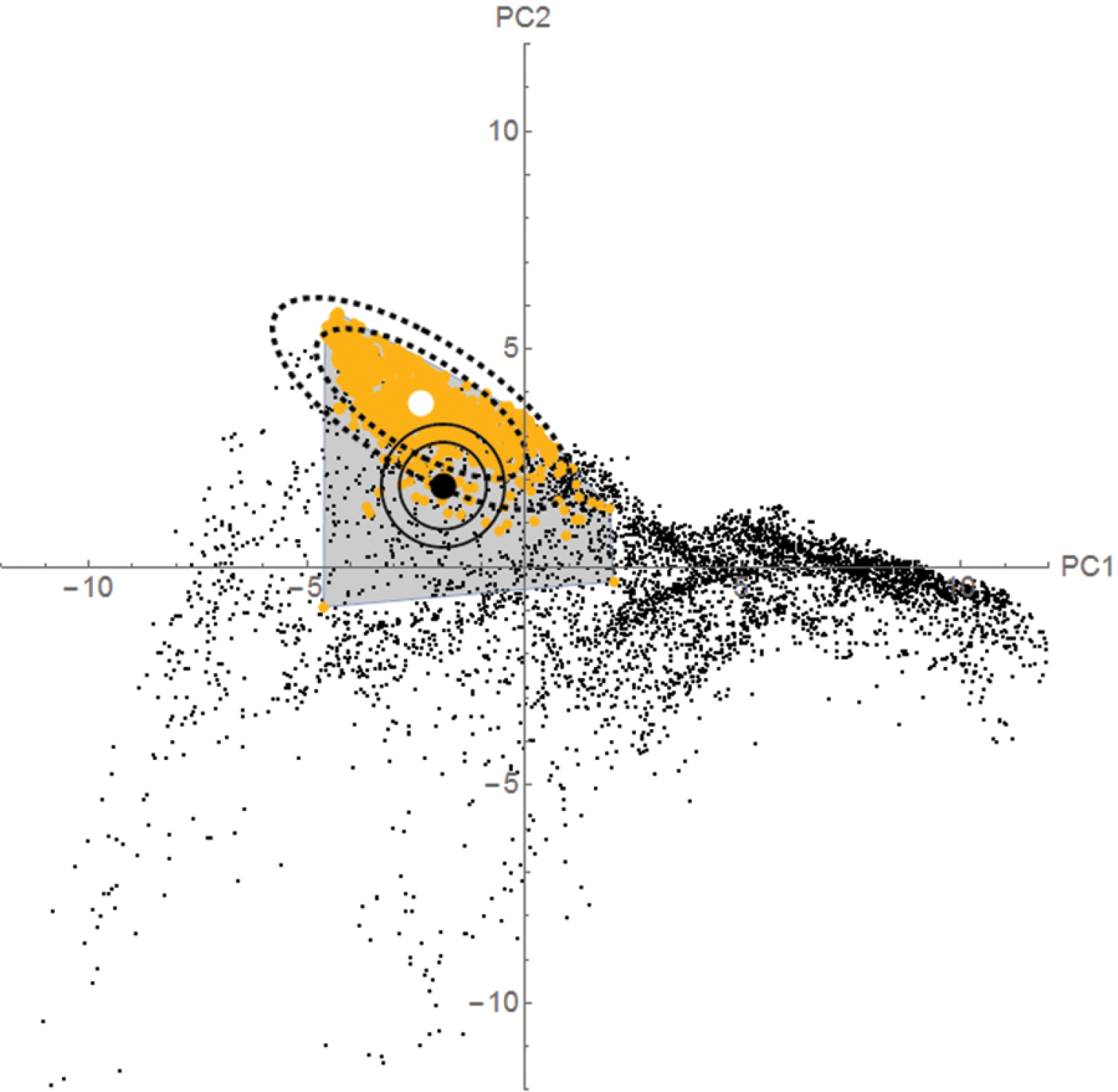
|
||
|
GBIF points for Dipodomys merriami in environmental space, showing differences between methods for delimiting niches and calculating niche-centroid distances. The black circle is the centroid of the convex hull (gray-shaded polygon), showing the strong effect of one outlier point. The white circle is the centroid of a 95% minimum volume ellipsoid that is able to ignore the outlier. Circles are Euclidean distances of radii 1 and 2, for the convex hull centroid; the dashed ellipsoids are the equivalent distances (Mahalanobis distances) taking into account the covariance shown by the points in gold (see text). Note the striking differences between the two methodologies in both shape of the niche estimated and the distances that result. In particular, note that the centroid estimated via convex hulls falls at the periphery of the cloud of points for the species’ occurrence. |